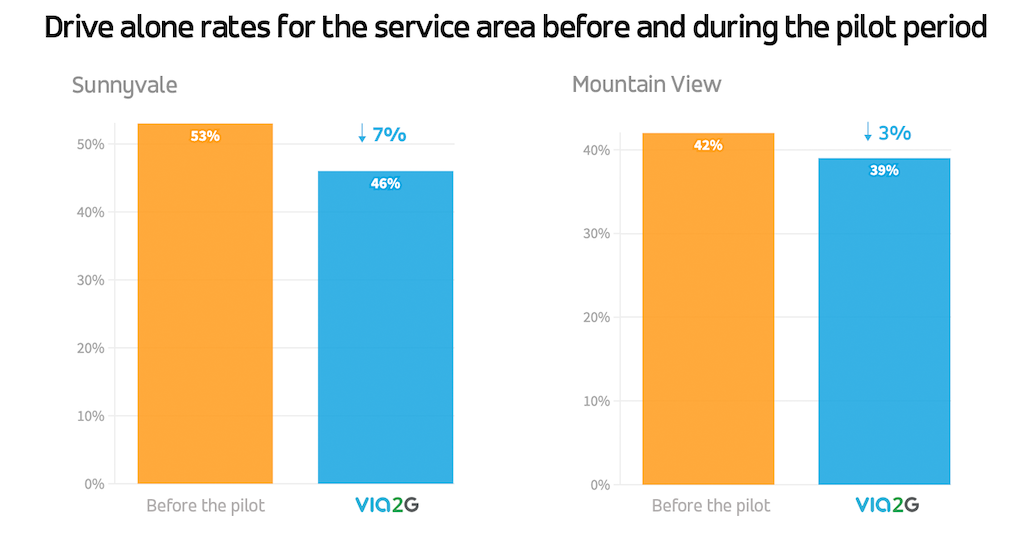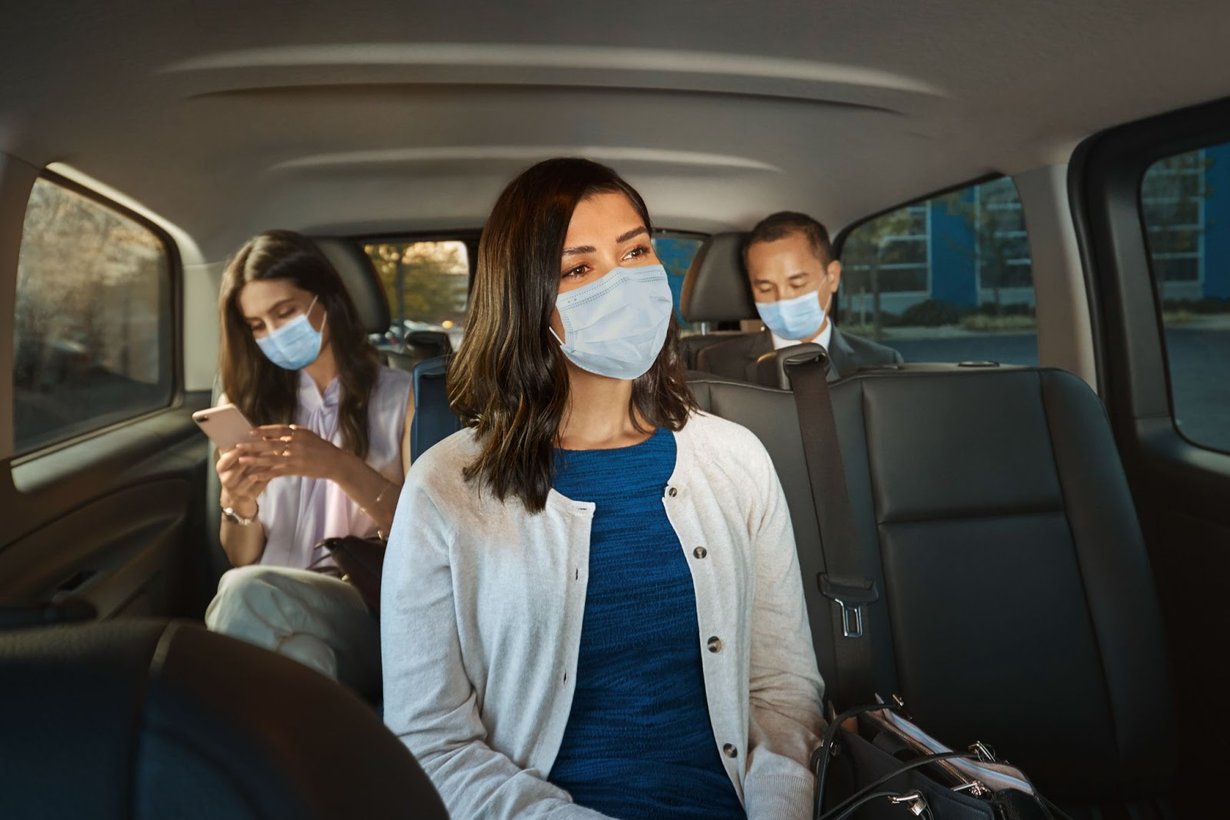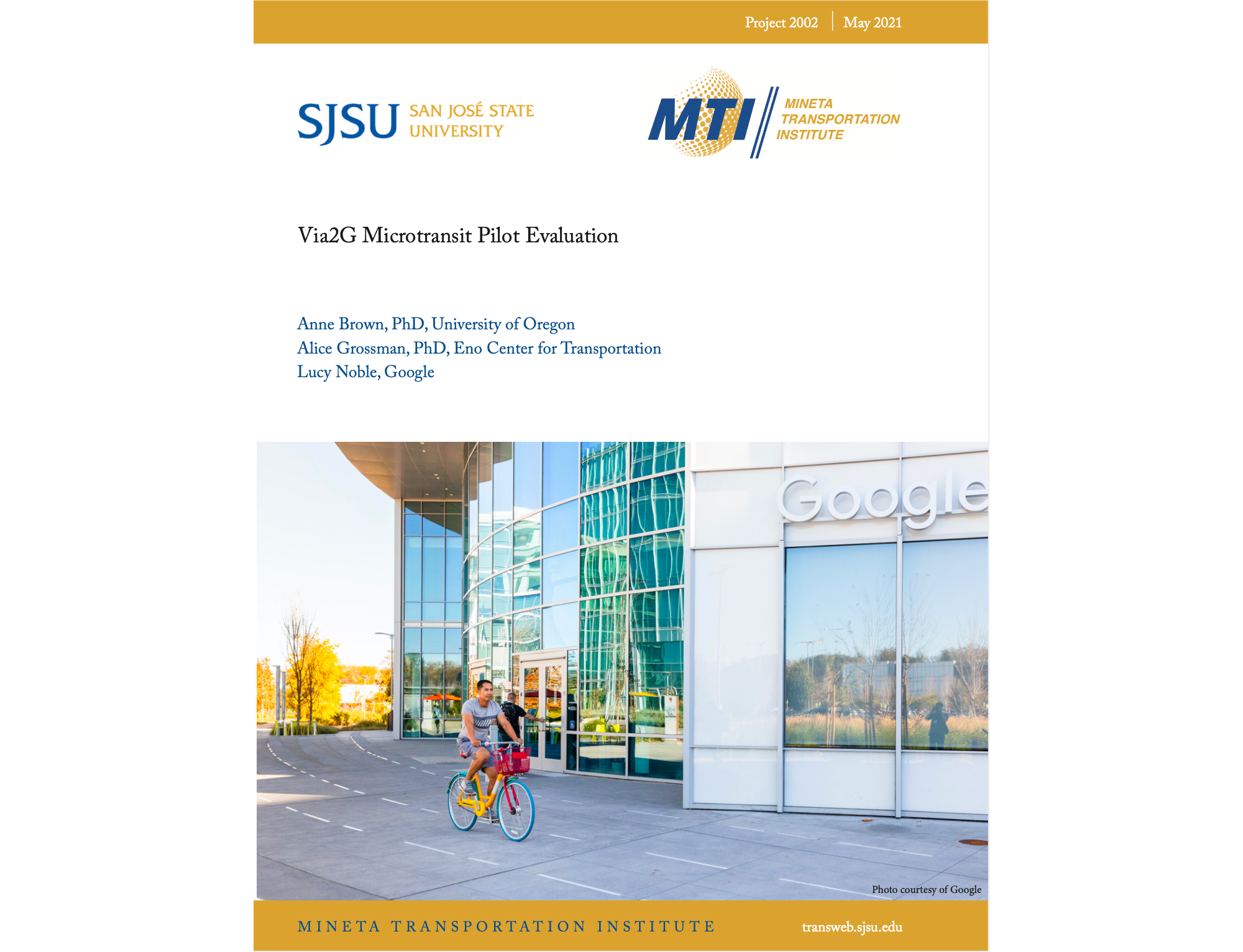Across the country, "return to office" has become top of mind, with employers piloting all forms of capacity management, desk scheduling, and vaccination requirements. But one question remains: for those employees who do return to physical offices, how will they get there? And how will they do safely, without placing further stress on roads, parking infrastructure, and the environment?
In fact, we’ve already seen a noticeable uptick in single-occupancy vehicle travel in big cities like New York, and Vanderbilt University’s traffic "rebound" calculator indicates that, without smart interventions from employers, transit agencies, and local governments, this troubling trend will be mirrored in communities of all sizes across the US. In response, companies looking to get ahead of this trend have started partnering with on-demand shared ride providers to offer an alternative commute option for employees. Employer-sponsored, shared transportation lowers a company’s impact on traffic congestion and emissions, saves on costly parking facilities, and provides employees with a stress-free commute — with time to relax, catch up on work tasks, and get to know their colleagues while en route to the office.
In August 2019, Google tapped Via to pilot a shared ride program for employees to and from its campuses in Sunnyvale and Mountain View, California, the latter being the company’s largest office and headquarters. The program, called Via2G, ran from October 2019 to early March 2020. After a hiatus due to COVID-19, Via and Google plan to relaunch the pilot this summer. One of the key findings of the extensive report on Google’s microtransit service concerns the program’s success in encouraging modal shift — moving employees away from single-occupancy vehicle travel and towards more sustainable modes of travel. On the other side of the country, Brookfield Asset Management and Via launched an on-demand corporate shuttle service in New York City’s Financial District in the summer of 2020. Employees working out of the Brookfield Place complex can book rides to or from the office on a pre-scheduled basis.
The model is flexible, with custom safety measures that allows Brookfield to determine employee booking parameters and permissions. As the service launched during the COVID-19 pandemic, vehicle capacity limits were deployed from the start, along with strict sanitation schedules and daily driver temperature checks. Rider satisfaction is at an impressive 4.8/5 stars for Brookfield’s corporate shuttle and, according to a survey conducted in February 2021, 76% of respondents would be “very disappointed” if the service were to end. When asked why they depend on the service, many riders expressed concerns about using mass transportation during the pandemic, with one individual commenting, “I [am] hoping to continue using Via…. While I am relatively more comfortable riding the trains home in full daylight with a highly-populated commuting path, the early morning feels quite a bit less safe.”

Note: Data was collected between January 1, 2020 and March 5, 2020
Over at Google, a new study out from the Mineta Transportation Institute (MTI) and authored by Anne Brown, Alice Grossman, and Lucy Noble, analyzes Via2G’s performance with a focus on environmental impact. One of the key findings of the extensive report on Google’s microtransit service concerns the program’s success in encouraging modal shift — moving employees away from single-occupancy vehicle travel and towards more sustainable modes of travel was a key reason for launching the microtransit pilot: “Since land uses where many current and future Google employees live is less conducive to walking, bicycling, or taking transit to work, Google hopes that a shared, on-demand, curb-to-curb, microtransit service could help reduce the number of employees choosing to drive to work, and mitigate the negative externalities of driving including congestion, air, and noise pollution.”
And according to employee surveys and data collected, this goal was achieved. In fact, during the Via2G pilot, “drive alone rates for employees living in Via2G service areas fell from 53% to 46% in the Sunnyvale office and from 42% to 39% in the Mountain View campus.”
Additionally, Via2G consistently grew in ridership — both as zones were introduced and within existing zones. MTI also found that 59% of those who requested a trip usually “always or sometimes” drove to work prior to the program: Another signal that the microtransit alternative brought more people out of private cars and into shared travel. And these individuals weren’t trying out microtransit as a novelty either: 72% of Via2G users requested at least 2 trips and 81% of those who completed one trip decided to take another.
Part of this recurring use and rider loyalty can be ascribed to the sophistication of the rider assignment and aggregation technology employed — both of which encourage shared usage. Seventy-two percent of completed rides were shared with at least one other rider. According to these metrics, it’s clear that Google and Brookfield’s investments in microtransit through their corporate shuttle programs have further cemented their positions at the forefront of smart corporate transportation.





